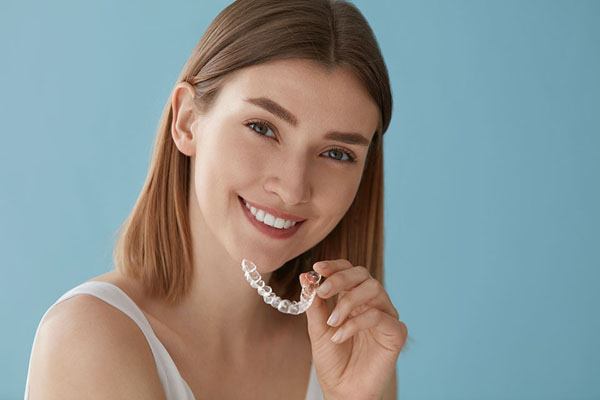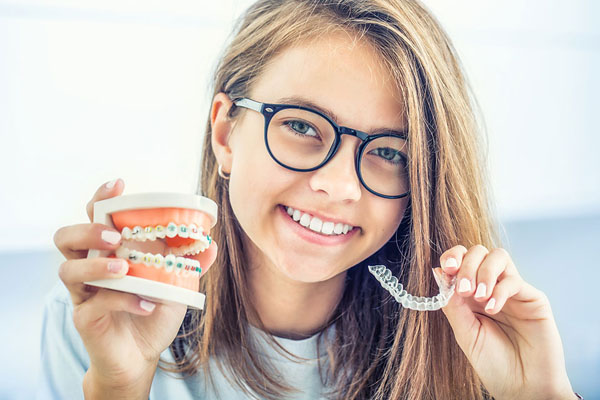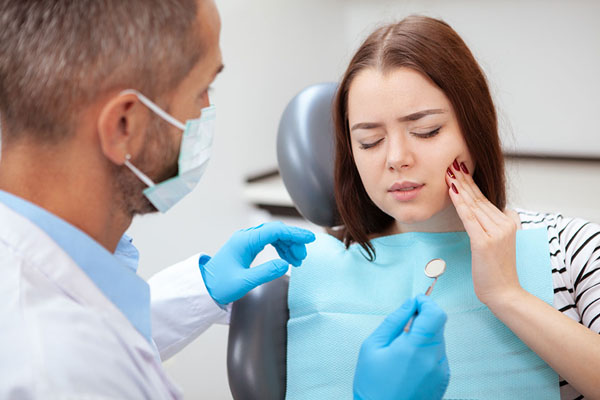Invisalign® Alternatives
Do You Need an Invisalign Alternative?
Sometimes, Invisalign isn’t right for you, whether due to costs or the complexity of your alignment issues. No need to fret if Invisalign treatment isn’t what your smile needs. There are various Invisalign alternatives that our dentist may recommend.
At your consultation with our Ashland dentist, they’ll evaluate your oral health and recommend the best orthodontic treatment option for your needs. While we do provide Invisalign at Today’s Dentistry, we may refer you to an orthodontist if braces or another form of orthodontics is the best for you.
What Is Invisalign?
Invisalign is an alternative to braces, using clear, removable aligners to gradually shift teeth into place. An orthodontist or Invisalign provider creates a custom treatment plan using 3D images of the patient’s teeth, and a series of aligners are produced for consistent wear.
Patients wear each set of aligners for 1 to 2 weeks, making slight adjustments to tooth position, and only remove them to eat, drink, brush, and floss. The average treatment time varies between 12 and 18 months and can fix mild to moderate orthodontic problems.
Best Invisalign Alternatives
There are many alternatives to Invisalign clear aligners. You and your orthodontist or Invisalign provider will go more in-depth about your options and your treatment plan at your consultation.
Traditional Braces
Traditional braces are one of the most common orthodontic treatments. They consist of brackets attached to the teeth that are connected by wires. An orthodontist adjusts these wires over time to gradually straighten the teeth. While they may not be the most aesthetically pleasing option, they’re effective for correcting a variety of dental issues, such as severely misaligned teeth.
Lingual Braces
Lingual braces are similar to traditional metal braces, but the brackets and wires are attached to the back of the teeth rather than the front. This makes them virtually invisible from the front, but they can be more difficult to clean and adjust than metal braces.
Ceramic Braces
Ceramic braces, or clear braces, are a type of orthodontic appliance used to straighten and align teeth, similar to traditional metal braces. The primary difference is the material from which they’re made. Ceramic braces are made from a clear or tooth-colored ceramic material, which makes them less noticeable than their metal counterparts.
The brackets of ceramic braces are bonded to the front of the teeth and are connected by a wire. This wire is gradually tightened over time, applying pressure to the teeth and guiding them into the desired positions.
Self-Ligating Braces
Self-ligating braces are similar to metal braces, but they use a special clip or bracket that holds the wire in place, eliminating the need for elastic bands. This can make them more comfortable and reduce the number of appointments needed for adjustments.
Retainers
While retainers aren’t typically used for severe orthodontic issues, they’re recommended after treatment. Their primary function is to hold teeth in their current positions.
Other Types of Clear Aligners
If Invisalign aligners aren’t an option, other clear aligner systems may work. These alternatives to Invisalign include:
- ClearCorrect: This system is similar to Invisalign clear aligners in many ways, providing a series of clear, custom-fitted trays that gradually move the teeth into their desired position. They’re almost invisible and can be removed for eating and cleaning.
- SmileDirectClub: This company provides a teledentistry service for orthodontics. They create clear aligners that are shipped directly to the consumer’s home, and the treatment progress is monitored remotely by orthodontists or dentists.
- Byte: Byte offers at-home aligners. They claim to provide quicker results than many other clear aligner systems due to a device they include called the HyperByte, which is a High-Frequency Vibration device that’s intended to help seat the aligners better and speed up treatment.
- SureSmile: SureSmile uses a robotic system to custom-bend a special shape-memory alloy wire to your unique prescription, ensuring efficient and effective treatment.
- Candid: This company also provides custom aligners directly to the consumer’s home. Candid works with orthodontists (not general dentists) to create a treatment plan and monitor progress.
- Orthly: Orthly offers clear aligners that are monitored by dental professionals through a mobile app.
Which Treatment is Best for You?
When determining what orthodontic treatment plan is best for you, you and your dental professional will discuss the following:
- Effectiveness: The most important factor is whether the treatment will effectively correct your dental issues. Our Ashland dentist can evaluate your teeth and recommend the best alignment method for your specific needs.
- Aesthetics: Invisalign clear aligners and lingual braces are more aesthetically pleasing than metal braces but may not be as effective for correcting severe dental issues. Consider your personal preferences and lifestyle when choosing a treatment.
- Cost: Dental alignment treatments can vary in cost, so consider your budget when making a decision. Your dental insurance may cover some or all of the costs of certain devices, so be sure to check with your provider.
- Convenience: Invisalign can be removed for eating and cleaning, making them a convenient option for many patients. However, they do require a certain level of responsibility and commitment to wearing them consistently. They can also only correct mild to moderate dental issues, so you may not qualify for Invisalign.
What Do Invisalign Alternatives Treat?
Invisalign alternatives can treat various dental issues, including:
- Tooth Crowding
- Spacing
- Overbites
- Underbites
- Crossbites
- Open Bites
- Rotations
- Severely Crooked Teeth
- Intrusion and Extrusions
Frequently Asked Questions
How long does it take to straighten teeth?
The length of the treatment plan can vary greatly depending on the severity of your dental issues and the type of alignment method. Braces typically take 18 to 24 months to straighten teeth, but more complex cases may require longer treatment. On the other hand, the average treatment time for Invisalign can range from six to 18 months, depending on the severity of your dental issues and how consistently you wear them.
Is dental alignment painful?
It’s normal to experience some discomfort or soreness after getting braces or starting clear aligner treatment. This discomfort usually subsides within a few days, but over-the-counter pain relievers and cold compresses can help alleviate any discomfort you may feel.
Can I eat normally during orthodontic treatment?
With traditional braces, there are certain foods that you will need to avoid to prevent damaging the brackets and wires. For example, hard or sticky foods like popcorn, chewing gum, or candy can all pose a risk to your braces.
Invisalign, on the other hand, can be removed for eating and cleaning. This means that you can eat whatever you want during treatment as long as you remove your aligners beforehand.
What is the cheapest way to straighten your teeth?
Affordable treatment options for teeth straightening include metal braces, ceramic braces, and clear aligners like Invisalign. You can also explore cost-effective treatments at dental schools, where procedures are performed by supervised students. Insurance coverage, payment plans, and programs offered by government health services or non-profits may help offset costs. Remember to consult a dental professional to discuss these options, as self-treatment can lead to costly complications.
Transform Your Smile Today!
Don’t let misaligned teeth hold you back from living your best life. The confidence that comes with a beautiful, healthy smile is priceless, and Today’s Dentistry is here to help you achieve that.
Take the first step towards the smile of your dreams by calling us today at (541) 482-7771 to schedule a consultation with our Ashland dentist. Let us help you regain your confidence and transform your life with a beautiful, healthy smile. We’ll also discuss your Invisalign alternative methods if the clear aligners aren’t right for you.



